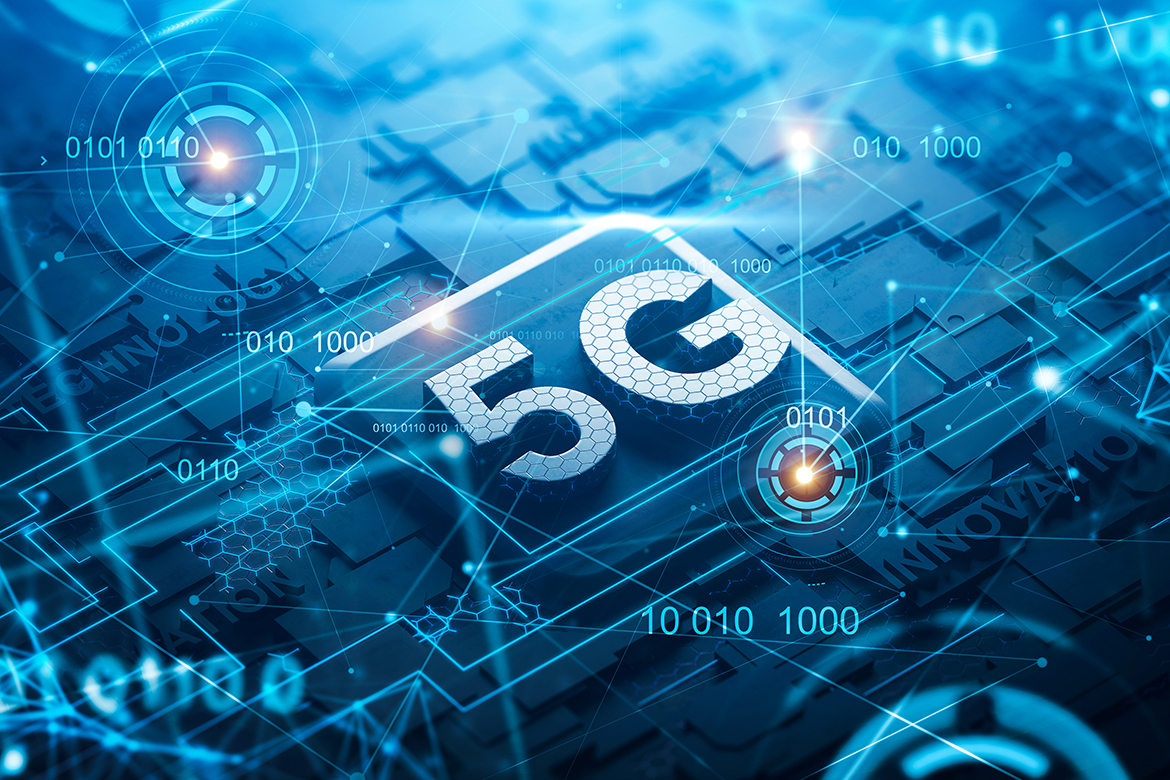The journey that began nearly a decade ago is finally coming to a head with the unveiling of the 5G network. Some cities have been used to test run 5G in the past which yielded good results and now it is getting ready to officially launch sometime in 2020.
Key Points
- 5G is the most advanced and recent in a long line of broadband services.
- 5G is predicted to become readily available to everyone in 2020.
- Data rates will be made faster with 5G, with better connection density as well as lower latency introduced to electronic gadgets.
What is 5G?
5G is the next big thing in the generation of mobile broadband services. It is meant to take over from the 4G LTE connection or at least enhance it. 5G will introduce download and upload speeds like nothing ever seen before. Just as 4G LTE replaced 3G, the new industry standard 5G will supplant 4G. 5G simply means “the fifth generation.”
This new standard has been equipped to be faster than 4G LTE technology. Not only will it make the Internet connection of smartphones faster, but it will also do the same for a host of other tech products such as Internet of Things (IoT) devices, smart homes, and connected cars.
In time to come, smartphones and other devices currently using 4G LTE will begin to use 5G instead.
How 5G Technology Works
Now that we have an understanding of the meaning of 5G, let’s find out how it works. 5G makes use of three different spectrum bands for its operation and they are:
Low-band Spectrum
Another name for this is the sub 1GHz spectrum. For carriers in the U.S, this is their primary band and because of that, it is almost depleted. The low-band spectrum is the best option when it comes to wall penetration and covering large areas. However, it is disadvantaged in the aspect of peak data speed, with its maximum request of 100Mbps.
Mid-band Spectrum
This is faster compared to low-band. Its drawback is in the aspect of building penetration which isn’t as good as the low-band spectrum. Its peak speeds can reach 1Gbps.
High-band Spectrum
This holds the promise for the highest performance for 5G, but its weaknesses are profound. It is also known as mmWave. Its peak speeds can be as high as 10Gbps but with very low latency. Its major disadvantage is low building penetration and low coverage area.
How Fast Is 5G?
One thing is certain, 5G will be way ahead of 4G LTE, but by how much? That’s what we’re about to find out.
Peak Data Rate
The data speeds of 5G will be significantly higher. Each mobile base station can experience up to 20Gbps downlink and 10Gbps uplink. Note, this isn’t the speed for a single person unless there is a dedicated connection in play, rather it’s a shared speed by every user on the cell.
Real-world Speeds
Though 5G has impressive peak data rates, actual speeds won’t correspond with it. User upload speed will be 50Mbps and the download speed will be 100Mbps.
Latency
This is the time needed for data to move from one point to the next. Ideally, it should take 4 milliseconds and 1 millisecond for special cases that require higher speed. An example of such a special case is remote surgeries.
Efficiency
Radio interfaces should have the ability to utilize energy efficiently, both when in use and when not in use. In a case where it’s not in use, after 10 milliseconds of inactivity, a radio should know to switch into a low-energy state.
Spectral Efficiency
This simply means the effective use of bandwidth or spectrum to transmit large amounts of data with as little transmission error as possible. The spectral efficiency of 5G should be higher than LTE at 15 bits/Hz uplink and 30bits/Hz downlink.
Mobility
5G will make base stations more able to support very high antenna movements up to 310 mph. An example of this is a high-speed train.
Connection Density
5G is expected to outperform LTE in the area of supporting a higher number of connected devices. The standard is a million connected devices per square kilometer for 5G.
5G vs 1-4Gs: What’s The Difference?
Any device connected to the Internet will show alphabets like 2G, 3G, 4G and most recently, 5G, which signifies its signal strength. Wireless communication was created to be better than wired communication (optical fiber) in the area of reliable and high-quality communication. Before knowing what differentiates 4G from 5G, it is good for us to also learn about previous generations.
First Generation (1G)
This is an analog technology that suffered a lot of problems such as poor voice quality, weak battery life, and occasional dropped calls. Its maximum speed is 2.4 Kbps.
Second Generation (2G)
The breakthrough that relegated 1G to the background is 2G. The analog technology used by 1G was replaced by digital technology at the introduction of 2G. This generation brought about the SMS and MMS data services and also put into effect the concept of GSM and CDMA.
Third Generation (3G)
This is the technological instrument that ushered in the majority of the wireless technology we make use of today like picture sharing, email, web browsing, and video downloading. This network is an integration of higher technology and some aspects of 2G to make data rate faster. As more tech advancements were made on 3G, it soon evolved into 3.5G and 3.75G, thereby paving the way to the 4G network.
Fourth Generation (4G)
4G surpasses 3G in every way and it is because it has vital technologies like OFDM (Orthogonal Frequency Division Multiplexing) and MIMO (Multiple Input Multiple Output). 4G has two standards namely LTE (Long Term Evolution), which is massively in use today and WiMAX (no longer in use). A 4G network has a maximum speed of 100Mbps for moving devices and 1Gbps for stationary devices. Its latency is less than 100ms and it also has very low congestion. The 4G network has two fractional parts namely, 4.5G and 4.9G.
Fifth Generation (5G)
Still in the process of development advancement, 5G is the next generation that will succeed and build on the 4G network. It is expected to bring about faster speed in data rates and higher connection density. 5G also features highly reduced latency and other notable improvements on 4G.
5G aims to bring improvements in these areas: battery consumption, wireless coverage, and device-to-device communication. 5G is designed to have a maximum speed of 35.46 Gbps, which is a speed about 35 times that of 4G. Key technologies that will be featured in 5G include Millimeter Wave Mobile, Massive MIMO and others. Also, 5G will create more room for a shared connection to the tune of at least 100 billion devices.
Top Use Cases
5G will have the following use cases:
Location Tracking
5G promises greater accuracy in location tracking compared to 4G. New technology needs more cell phone towers in close proximity to each other to be very effective and this translates to better triangulation. When this is combined with its lower latency and higher speed, location tracking in real-time will be easily achieved. Places, where this location tracking can be applied, are in autonomous vehicles, fleet management, public safety, warehouse efficiency and many more.
Video
The video conferencing already provided on the 4G network still has room for improvement. 5G is expected to take it to a level where it will be difficult to differentiate video conferencing from face-to-face meetings.
IoT Communications
5G comes with a capacity that can link a greater number of devices to networks. Carriers may likely choose to focus primarily on data and voice in the meantime, which leaves companies with plans to capitalize on edge computing and network slicing to fend for themselves. A lot of these companies are already making moves to establish private networks that will tackle their needs as quickly as possible.
Controls and Automation
The improvements in capacity, speed, and latency will result in competition across various industries due to better manufacturing controls, warehouse automation, and robotics. This will be possible because the use of cables will be almost nonexistent, thereby increasing flexibility, reconfiguration costs will also be cut down and lead times will be greatly reduced.
High-performance Edge Analytics
5G is believed to be the needed catalyst that will facilitate the industrial revolution. The technology will reveal more ways of data monetization, predictive maintenance, and cognitive analytics.
Conclusion
From the introduction of the first smartphone, the world has not ceased to desire bigger, cooler, faster and better smartphones that have improved functions than the ones they currently own. 5G technology is one of those improvements that people are looking forward to because it promises to bring a lot of positive changes to our way of life.
The noise around the technology has been on the increase since 2019 with few cities in the U.S. experiencing its power after wireless carriers launched it in them. However, for the majority of the world’s population, 5G will not be available until sometime in 2020 or even beyond.

















